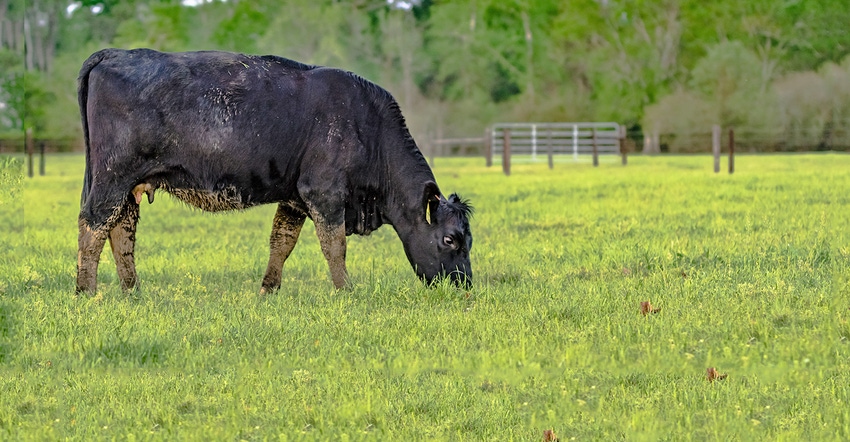Reduce grass tetany by balancing minerals, managing cattle grazing
Grass tetany symptoms include unusual behavior, muscle tremors, frequent urination, staggers and convulsions.
February 23, 2022

"With lush grass growth coming in the spring, it is time to manage cattle and implement mineral supplementation strategies to reduce the incidence of grass tetany in your cattle operation," says Patrick Davis, University of Missouri Extension livestock field specialist.
Cattle grass tetany symptoms result from low blood magnesium levels. Low dietary intake, mineral imbalances that reduce absorption and metabolic activities such as milk production that cause high magnesium release can result in low blood magnesium levels. Lack of grass tetany prevention can lead to cattle sickness and death. Therefore, Davis says management and supplementation strategies are needed to reduce the incidence of grass tetany in cattle operations.
"Cattle consumption of lush spring forage growth can cause grass tetany," says Davis. The combination of high potassium and low sodium in lush spring forage growth reduces absorption and utilization of magnesium. Although magnesium deficiency leads to grass tetany, recent evidence implicates sodium deficiency in grass tetany issues.
Therefore, Davis urges cattle producers to utilize a balanced mineral program that provides proper salt and magnesium supplementation free choice to reduce the incidence of grass tetany in cattle. Furthermore, it is suggested to begin feeding a high magnesium mineral (12 -14% magnesium as magnesium oxide) approximately 30 days prior to green-up.
"Older cows in early lactation are the most susceptible to grass tetany," says Davis. During early lactation, cows are producing large amounts of milk which results in high release of magnesium. This combined with older cow's reduced ability to mobilize bone magnesium leads to low blood magnesium levels and grass tetany symptoms.
Davis urges cattle producers to reduce the incidence of grass tetany by grazing less susceptible animals like dry cows, heifers, stocker cattle and cows nursing calves more than 4 months old on high-risk lush green pastures.
"Plan your treatment in case cattle exhibit signs of grass tetany," says Davis. Grass tetany symptoms include unusual behavior, muscle tremors, frequent urination, staggers and convulsions. Davis urges cattle producers to visit with their veterinarian and plan treatment protocols in case cattle exhibit these symptoms because swift action may lead to saving the animal.
"Losses due to grass tetany can negatively impact operation productivity and profitably," says Davis.
Source: University of Missouri Extension, which is solely responsible for the information provided, and wholly owns the information. Informa Business Media and all its subsidiaries are not responsible for any of the content contained in this information asset.
You May Also Like



